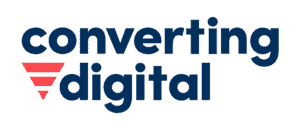Our goal in this article is to provide an understanding of what Optimization Events in Meta (Facebook) Advertising are, how many are necessary for exiting the learning phase, and how intent versus requirement are weighed.
Meta Algorithm & Machine Learning
When advertising on Facebook, as well as any other social media platform, you can’t help but rely on the algorithm. There’s no escape from it.
The algorithm’s job is to analyze your campaign and ads and to show your ads to people that are most likely to be converted.
As with every Machine Learning technology, the more data that is collected, the more accurate and precise the decisions the software will be able to make. or, in our case, the more right people that will see your ads.
According to Meta, for the campaign to be optimized – which means that you can make the best out of it – it requires at least 50 Optimization Events per week.
What are Optimization Events?
The definition by Facebook is “The number of times your ads achieved the outcome your ad set is currently optimized for.”
While creating your ad-set, you require to define your conversion event. An event describes the outcome you want to achieve. It can be “Purchase”, for example, which means that you want people to buy what you sell.
It can be also “Add to Cart” (A2C), which means the goal is to get as many people as possible to add the product to the cart, and so on.
eCommerce campaigns obviously aim to bring us the most sales, so it’s recommended to set your conversion event to “purchase”. By doing that, the algorithm now shows your ads to people who are most likely to buy.
Intent / Optimization Events Requirement Trade-off
But, as mentioned, to be sure that the algorithm does it properly, you need at least 50 optimization events – or, in this case, 50 purchases – per week.
Sometimes it can be very hard to get to a point when your ad-set brings 7 purchases per day – when selling expensive products, for instance.
Let’s use an example:
Assuming that you sell luxury watches online, and the price for a single piece is $100K.
Say that your target ROAS (Return On Ad Spend) is 4, which is a pretty good ROAS.
That means that every sale costs you $25K (or in other words, your Cost Per Acquisition – CPA – is $25K).
50 purchases per week mean about 7 purchases per day. If so, your ad-set’s daily budget should be $175K (25K*7), and your monthly budget $750K (25K*30). This is a lot.
In these cases, you can either leave your conversion event as “purchase” and not meet the requirements, or set a different one – “Add to Cart”, for example – which’s higher in the funnel, and costs less to achieve 50 of it per week.
But it can still be a bit tricky. Because now the algorithm no longer works on bringing the people that are most likely to buy, but those who are most likely to add to their cart.
Adding to the cart is something that we do much more easily than buying, so you maybe have 50 A2Cs per week, but that doesn’t necessarily mean you’ll get the same amount of purchases as you do when your objective is Purchase.
Boost your business performance with Converting Digital
We’re Converting Digital, a digital growth agency specializing in digital marketing and advertising across various verticals such as e-commerce, lead generation, and more.
Drop us a line here or schedule a free consultation call here to discuss how we can help you boost your business performance.




